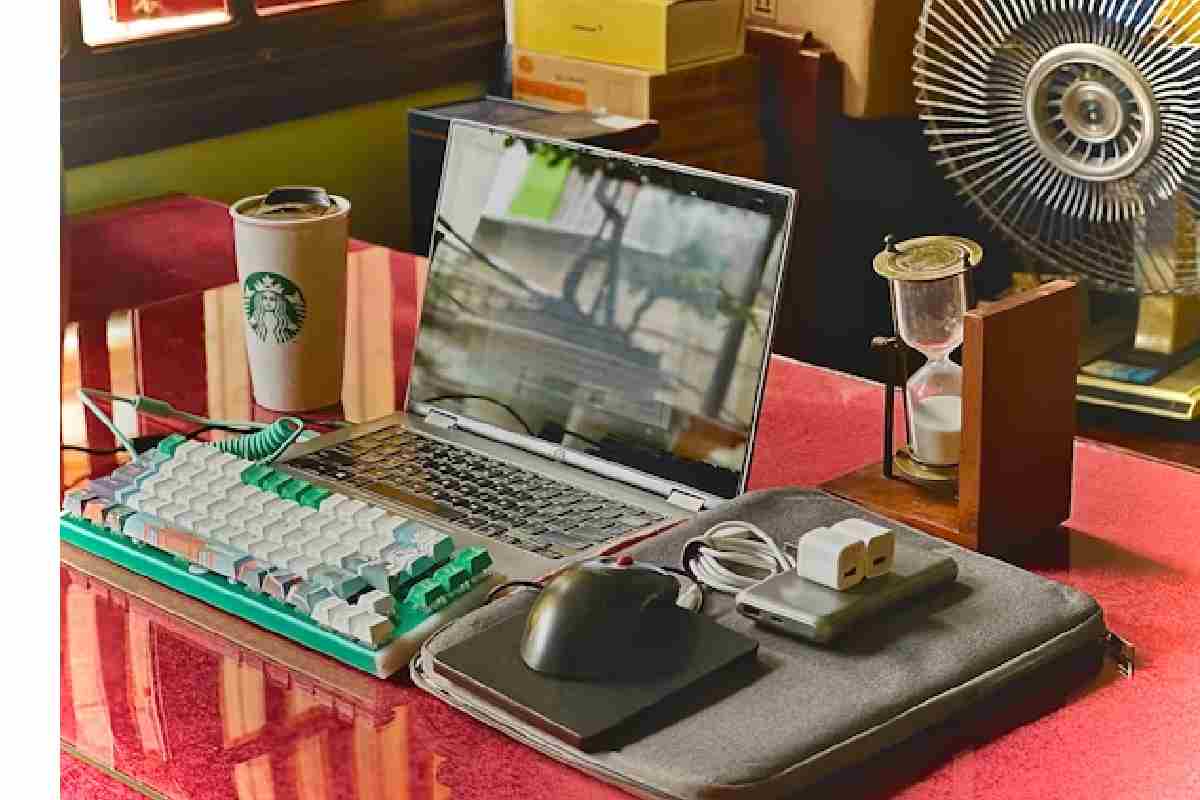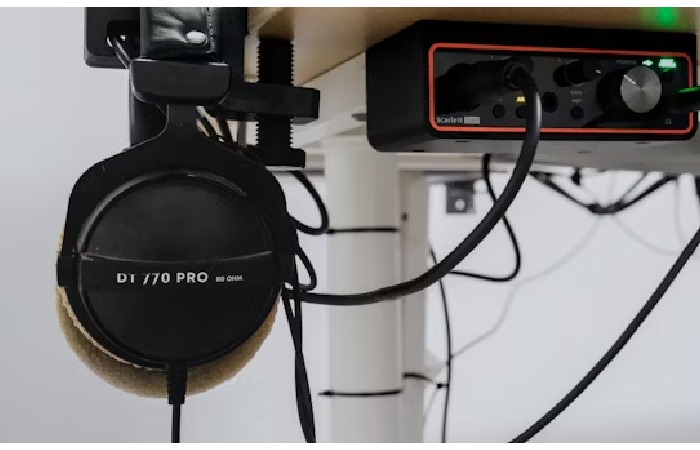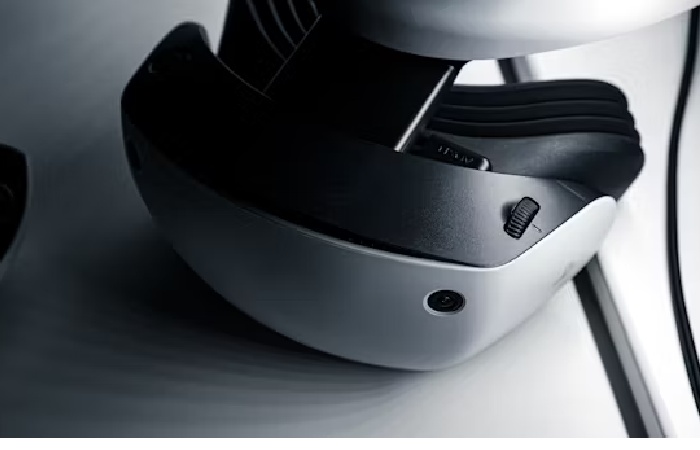Picture this: You’re deep in a competitive match, heart racing, when you hear it—a faint footstep behind you. That split-second audio cue saves your game. You spin around, take the shot, and claim victory. Your teammates are celebrating, but you know the truth: your ears won that fight just as much as your reflexes did.
Gaming audio has come a long way from the bleeps and bloops of arcade cabinets. Today, it’s not just about hearing the game—it’s about experiencing it on a completely different level. The right audio setup can mean the difference between missing crucial details and having a tactical advantage that puts you ahead of the competition. But here’s what most people don’t realize: the evolution of gaming audio isn’t just about better speakers or fancier headphones. It’s a story of technological breakthroughs, changing player expectations, and the blurring line between virtual and real-world soundscapes.
Table of Contents
From Mono Madness to Spatial Awareness
Back in the early days of PC gaming, audio was almost an afterthought. Developers worked with severe hardware limitations—we’re talking about systems that could barely produce more than a few simultaneous sounds. The original IBM PC speaker could only play one tone at a time. One. Single. Beep.
Then came sound cards, and suddenly gaming audio exploded with possibility. The AdLib and Sound Blaster cards of the late 1980s and early 1990s weren’t just incremental improvements—they completely transformed what games could sound like. Composers could finally create actual music instead of beepy approximations. Sound effects gained depth and character. Games started to feel alive in ways that pure visuals couldn’t achieve alone.
But the real game-changer came with positional audio. When games started supporting 3D sound in the mid-1990s, it fundamentally altered how players interacted with virtual worlds. Suddenly, you could hear enemies approaching from specific directions. Environmental sounds created atmosphere and immersion. Audio became a gameplay tool, not just background noise.

The Wireless Wake-Up Call
For years, serious gamers stuck with wired headsets. The reasoning seemed solid: wired connections meant zero latency, reliable performance, and no battery anxiety. Wireless technology was associated with dropouts, interference, and that annoying delay between what you saw and what you heard. If you wanted competitive-level performance, you kept that cable plugged in.
But technology has this funny way of making yesterday’s absolutes look silly. Modern wireless protocols changed everything. Low-latency wireless transmission, improved battery technology, and smarter signal processing closed the gap between wired and wireless performance to the point where most users simply can’t tell the difference anymore.
The freedom that comes with cutting the cord extends beyond just convenience. Think about how you actually game. You lean forward during intense moments, shift back during cutscenes, maybe stand up to stretch between matches. A cable doesn’t just tether you to your PC—it limits your natural movement and creates just enough friction to pull you out of the experience. Going wireless removes that invisible barrier.
Today’s gaming-grade wireless technology delivers the kind of performance that would have seemed impossible just five years ago. We’re talking about 2.4GHz wireless connections with latency so low you’d need specialized equipment to even measure it. Battery life has improved to the point where you can game for 20-30 hours straight on a single charge. And the convenience factor? Being able to walk to the kitchen for a snack without missing crucial voice chat or taking off your headset entirely transforms how you interact with your gaming space.
When you’re shopping for a new setup, finding the right wireless headset for pc means looking beyond just the wireless part. Modern gaming headsets pack in spatial audio processing, customizable EQ settings, and microphone technology that makes you sound like you’re broadcasting from a professional studio, not your bedroom. The wireless functionality is just the foundation—everything else builds on top of that freedom

Why Audio Quality Actually Matters More Than You Think
Here’s something that doesn’t get talked about enough: audio fatigue is real, and it impacts your gaming performance more than you probably realize. When you’re listening to compressed, low-quality audio for hours, your brain works overtime to process and make sense of the information. Good audio quality isn’t just about sounding nice—it’s about reducing cognitive load so you can focus on the game itself.
High-quality audio drivers with wide frequency response ranges let you hear details that simply don’t exist in cheaper alternatives. The difference between decent headphones and great ones isn’t just volume or bass—it’s clarity, separation, and the ability to distinguish between overlapping sounds. In competitive scenarios, that translates to better situational awareness and faster reaction times.
The frequency response curve tells you which sound ranges your headset emphasizes. Gaming headsets often boost the bass and treble ranges, which can make explosions feel more impactful and footsteps more pronounced. But too much of this artificial enhancement creates a fatiguing listening experience. The best gaming audio strikes a balance—enhancing important gameplay sounds without turning everything into a distorted mess.
Driver size matters, but it’s not everything. Larger drivers (typically 50mm or larger in gaming headsets) can produce deeper bass and handle higher volumes without distortion. But driver quality, materials, and acoustic design all factor into the final sound signature. A well-designed 40mm driver can outperform a cheap 50mm driver any day of the week.
Then there’s impedance—a specification most people ignore but really shouldn’t. Impedance (measured in ohms) affects how much power your headset needs to reach proper volume levels. Most gaming headsets sit in the 32-64 ohm range, which works perfectly with standard PC audio outputs. Higher impedance headphones might sound better but often require dedicated amplification to reach their potential. For gaming purposes, you want something that sounds great straight from your PC without needing additional hardware.

Spatial Audio: Marketing Hype or Legitimate Advantage?
Virtual surround sound has been around for years, and gamers have learned to be skeptical. Early implementations of “7.1 surround” in headsets were often just marketing fluff—taking stereo audio and processing it until it sounded vaguely directional, but mostly just hollow and weird.
Modern spatial audio is different. Technologies like Dolby Atmos, DTS:X, and Windows Sonic use sophisticated algorithms that model how sound actually behaves in three-dimensional space. These systems account for how your ears perceive direction based on minute timing differences, frequency filtering, and the acoustic effects of your head and outer ear.
The result? You can accurately pinpoint sounds above, below, and around you in ways that simple stereo panning never achieved. In competitive shooters, this is practically a superpower. You don’t just hear footsteps—you hear them on the floor above you, moving from left to right, getting closer. Your brain processes this information almost instantly, letting you react before your opponent even appears on screen.
But here’s the catch: spatial audio only works as well as the source material and processing chain support it. Games need to be designed with proper 3D audio in mind. Your audio hardware needs to properly decode and render the spatial information. And your listening environment matters too—spatial audio processing assumes you’re wearing headphones in a relatively quiet space, not listening through speakers with room acoustics affecting everything.
When everything aligns, though, spatial audio creates genuinely immersive experiences. Single-player story-driven games benefit just as much as competitive multiplayer. Walking through a forest and hearing wind rustle through leaves above you, water flowing somewhere to your left, and distant wildlife calling from specific locations—this level of environmental audio design makes virtual worlds feel tangible and real.
The Microphone Situation Nobody Talks About
Gaming headsets live and die by their microphones, yet mic quality often gets treated as an afterthought. Everyone focuses on how things sound coming in, but if your teammates can’t understand you, what’s the point?
Clear communication in team-based games isn’t optional—it’s fundamental to success. A mediocre microphone doesn’t just make you sound bad; it creates miscommunication, forces teammates to ask you to repeat yourself, and introduces friction into coordination. In clutch moments, that split-second delay while someone says “what?” can cost rounds.
Modern gaming headset microphones have gotten dramatically better. Noise cancellation technology filters out keyboard clatter, mouse clicks, and background noise. Cardioid and unidirectional pickup patterns focus on your voice while rejecting off-axis sounds. Some high-end models even include multiple microphone elements and use beamforming to further isolate your voice from environmental noise.
But here’s what most reviews won’t tell you: microphone positioning matters more than almost any other factor. The best microphone in the world sounds terrible if it’s too far from your mouth or positioned incorrectly. That’s why boom microphones remain the gold standard for gaming—they let you position the capsule right where you need it for optimal pickup.

Building Your Audio Environment
Your headset is only part of the equation. The space where you game affects your audio experience in ways that are easy to overlook. Hard surfaces reflect sound, creating echoes and reverb that muddy positional cues. Too much soft material absorbs high frequencies, making everything sound muffled.
You don’t need professional acoustic treatment to improve your gaming audio environment, but a few strategic choices make a noticeable difference. A desk pad reduces desktop reflections. Curtains or wall hangings help control room reverb without killing the space entirely. Even something as simple as repositioning your desk away from corners can reduce bass buildup that masks important mid-range game sounds.
Cable management deserves mention too, even in a wireless world. Charging cables, power adapters, and the nest of wires behind most gaming setups all generate electrical interference. Keeping signal cables separated from power cables, using quality shielded connectors, and routing everything sensibly reduces the chance of picking up hum, buzz, or interference that degrades audio quality.
Your PC’s audio settings impact sound quality more than most people realize. Windows comes with various audio enhancements and effects that often do more harm than good. Disabling unnecessary processing, setting proper sample rates, and ensuring exclusive mode works correctly all contribute to cleaner, more accurate audio output.
What’s Next for Gaming Audio
The future of gaming audio looks wild. Haptic feedback is merging with audio to create experiences you don’t just hear—you feel. Imagine bass frequencies transmitted through the headband or earcups, letting you physically sense explosions or environmental rumble. Some manufacturers are already experimenting with this technology, and early implementations show serious promise.
Personalized audio profiles represent another frontier. Your ears are unique, and they affect how you perceive sound in measurable ways. Future audio systems might scan your ear structure and create customized sound profiles optimized for your specific anatomy. This isn’t science fiction—companies are already developing consumer-friendly versions of technology that previously only existed in research labs.
AI-powered audio enhancement is becoming more sophisticated. Rather than applying blanket EQ curves, smart processing can analyze game audio in real-time and optimize specific sounds—enhancing footsteps in competitive modes while preserving musical score in story moments. This adaptive approach promises better audio regardless of what you’re playing.
The convergence of gaming, streaming, and content creation is pushing audio technology forward too. More people are doing it all on a single setup—gaming, recording, streaming, and producing content. Audio hardware needs to excel at multiple tasks simultaneously, which drives innovation in areas like multi-source mixing, real-time processing, and flexible connectivity options.
Making the Investment Count
Quality gaming audio isn’t cheap, but it also doesn’t have to break the bank. The sweet spot for most gamers sits in the $100-200 range, where you get dramatically better performance than budget options without paying premium prices for diminishing returns.
That said, going cheaper than $60-70 usually means significant compromises. At that price point, manufacturers cut corners on driver quality, build materials, and audio processing. You can game with budget headsets, absolutely—but you’re leaving performance on the table, and you’ll likely replace them sooner than you’d expect.
At the high end ($250+), you’re paying for refinement and specific features. Exceptional build quality, premium materials, advanced wireless technology, and sophisticated audio processing all cost money. For competitive players or audio enthusiasts, these investments make sense. For casual gamers, the mid-range offers better value.
Consider longevity when budgeting. A good gaming headset should last 3-5 years with proper care. Replaceable earpads extend usability. Strong build quality prevents the creaking, cracking, and breaking that plague cheaper models. Buying once and buying right saves money compared to replacing budget headsets every year.
The Bottom Line
Gaming audio has evolved from an afterthought into a genuine competitive advantage and immersion multiplier. The technology available today would blow the minds of gamers from just a decade ago. Low-latency wireless connectivity, spatial audio processing, crystal-clear microphones, and comfort-focused design have converged to create experiences that feel borderline magical.
But technology is only half the story. How you use your audio equipment, the environment where you game, and understanding what actually matters versus marketing fluff—these factors determine whether you’re truly getting the most from your setup.
The audio revolution isn’t coming. It’s already here. The only question is whether you’re ready to hear the difference.

